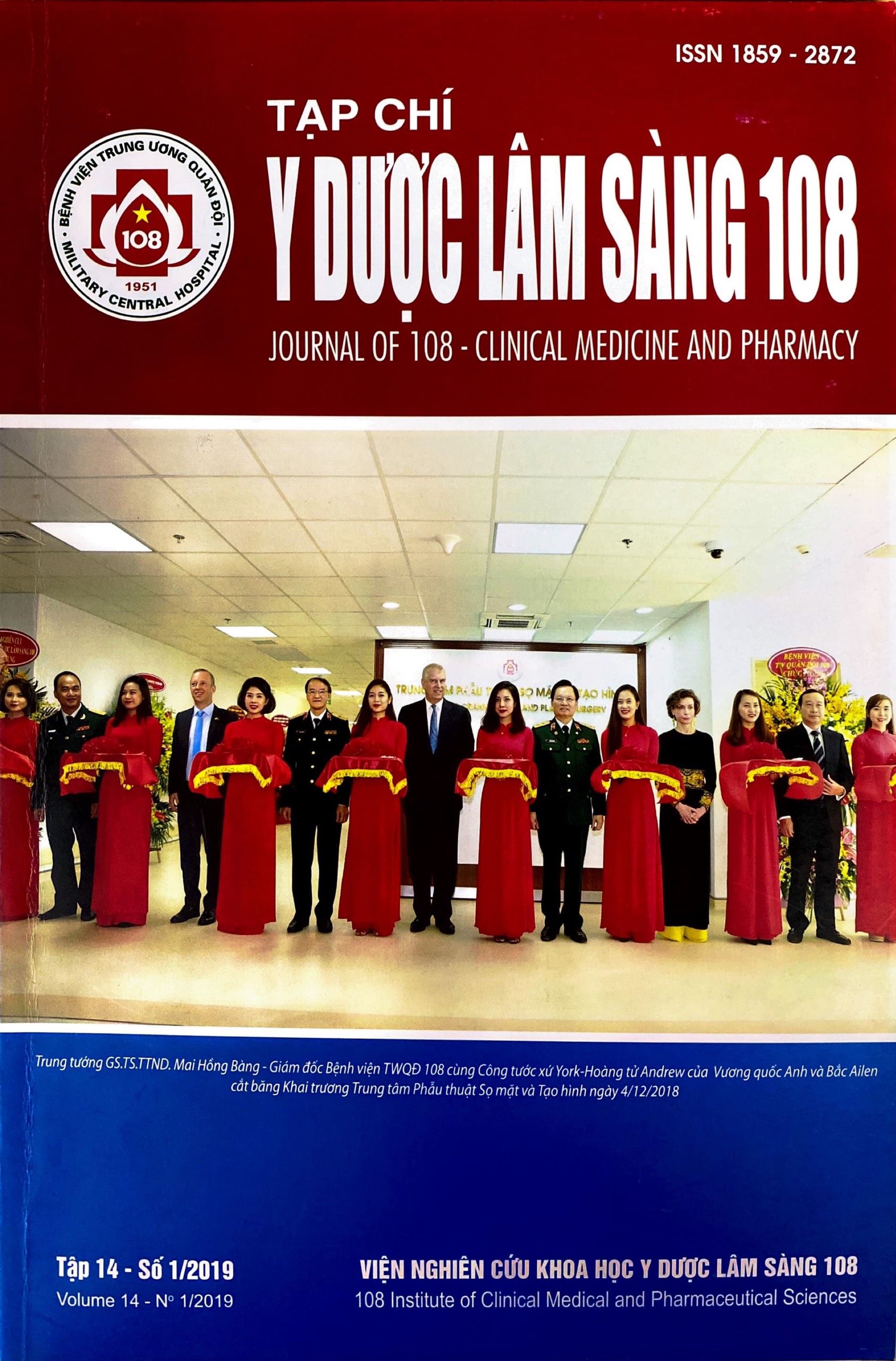Features of mediastinal abscess caused by esophageal perforation treated at Viet Duc Hospital
Main Article Content
Keywords
Abstract
Objective: The purpose of our study was to assess the treatment of mediastinal abscess due to esophageal perforation and to make recommendations. Subject and method: A prospective study was conducted on patients with mediastinal abscess due to perforation of the esophagus treated in Viet Duc Hospital from January 2016 to June 2018. The diagnosis criteria of mediatinal abscess was based on Estrera (1983) standard, classified by Endo S (1999). Result: A total of 33 cases, the average age was 51.48 ± 16.30 years with the youngest of 14 years old, and the oldest of 88 years old; men accounted for 78.8%. Locations of esophageal lesions: 57.6% in 1/3 upper, 27.3% in 1/3 middle and 15.1% in 1/3 lower. Causes of perforation: 72.7% of foreign bodies, 21.2% of pathology. Type I and IIa accounted for 25/33 (75.8%). Managements on emergency of esophagus included: Perforation isolation by nasogastric catheter or gastrostomy, esophageal repair in 3 cases, 2 with stent graft due to complications to aortic artery. No any case of esophageal fistula in 2 cases were inserted stent. Outcomes: 2 discharged to die and death in the hospital so the mortality was accounting for 6.1%. Conclusion: Experiences with 33 cases of mediastinal abscess caused by perforation of the esophagus shown that most cases had superior or middle lesions and needed gastrotomy, and with inferior lession should make jejunostomy, the insertion of stent is considered if the lesion suspected to the vessels.
Article Details
References
2. Nguyen Duc Chinh, Tran Tuan Anh, Pham Vu Hung, Pham Gia Anh, Philipp Omar Hannah, Tran Dinh Tho (2017) Experience on disgnosis of descending necrotizing mediastinitis at Viet Duc Hospital. The THAI Journal of SURGERY 38: 22-26.
3. Son HS, Cho JH, Park SM, Sun K, Kim KT, Lee SH (2006) Management of descending necrotizing mediastinitis using minimally invasive video-assisted thoracoscopic surgery. Surgical laparoscopy, endoscopy & percutaneous techniques 16(6): 379-382.
4. Landen S, El Nakadi I (2002) Minimally invasive approach to Boerhaave’s syndrome: A pilot study of three cases. Surgical endoscopy 16(9): 1354-1357.
5. Nakamura Y, Matsumura A, Katsura H et al (2009) Successful video-thoracoscopic drainage for descending necrotizing mediastinitis. Gen Thorac Cardiovasc Surg 57(2): 111-115.
6. Pearse HE (1938) Descending necrotizing mediastinitis. Ann Surg 108(4): 588-611.
7. Estrera AS, Landay MJ, Grisham JM, Sinn DP and Platt MR (1983) Descending necrotizing mediastinitis. Surg Gynecol Obstet 157: 545-552.
8. Endo S, Murayama F, Hasegawa T, Yamamoto S, Yamagychi T, Sohara Y et al (1999) Guideline of surgical management based on diffusion of descending necrotizing mediastinitis. Jpn J Thorac Cardiovasc Surg 47: 14-19.
9. Kroepil F, Schauer M, Raffel AM, Kröpil P, Eisenberger CF, Knoefel WT (2013) Treatment of early and delayed esophageal perforation. Indian J Surg 75(6): 469-472.
DOI 10.1007/s12262-012-0539-z.
10 Reinocl J Jones and Paul C Samson (1975) Esophageal injury. Collective review. The Annals of Thoracic Surgery 19(2): 216-230.
11. Jiajia Liu, Xiaoli Zhang, Dinghua Xie, Anquan Peng, Xinming Yang, Fenglei Yu, Deliang Liu (2011) Acute mediastinitis associated with foreign body erosion from the hypopharynx and esophagus. Otolaryngology, head and neck surgery 146(1): 58-62.
12. Chang S , Cheng BC , Huang J , Mao ZF , Wang TS , Xia J (2006) Classification and surgical treatment of intrathoracic esophageal injury caused by foreign body 44(6): 409-411.
 ISSN: 1859 - 2872
ISSN: 1859 - 2872
